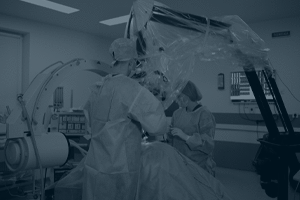Choosing is losing. And when developing a medical app, the choice between a native development or hybrid platform can be a difficult and strategic dilemma between cost and performance. In this perspective, we compare both approaches and provide you with a decision framework.
What’s the problem?
When developing a medical app, you want to maximize the targeted user group. In a market divided between Android and iOS users, this would mean that you either have to give up on one of them, or develop 2 versions of your app, nearly doubling development effort.
Hybrid development platforms aim to overcome this problem by offering a way to use a single codebase (Java, HTML5 or CSS) which is translated into both an Android and iOS app. The use of hybrid platforms is growing rapidly. However, these technologies come with their own drawbacks, as they don’t offer the same performance that native apps do. They e.g. don’t support all the design and UX features that a native app offers, and they tend to be slower.
Hence, the initial dilemma between cost and market reach shifts to a dilemma between cost and performance. Performance can be rated on: speed, security and user experience. A native development will be better, a hybrid development will be faster/cheaper, and in many cases ‘sufficient’, making the dilemma a hard nut to crack.
So how do you choose between the two?
There are a number of clear guidelines and arguments to guide the decision. However, the main challenge, as is often the case, will be to get a good understanding on subjective and uncertain elements in the comparison. For example:
- What’s the value of a slightly better user experience?
- What’s the required processing power?
- What’s our expected growth and user base?
Before going into details, I should add that the discussions on hybrid or native approaches are quite fanatic and that the support of developers for their preferred approach can border religion. The technology is also evolving rapidly, either dissolving advantages for native approaches or creating new ones with each new version. But a deep understanding of the app’s technical and user related requirements will be essential in the debate.
The following 5 elements should be investigated to compare both approaches.
Download the perspective to continue reading on the 5 elements to compare native and hybrid app development platforms.





